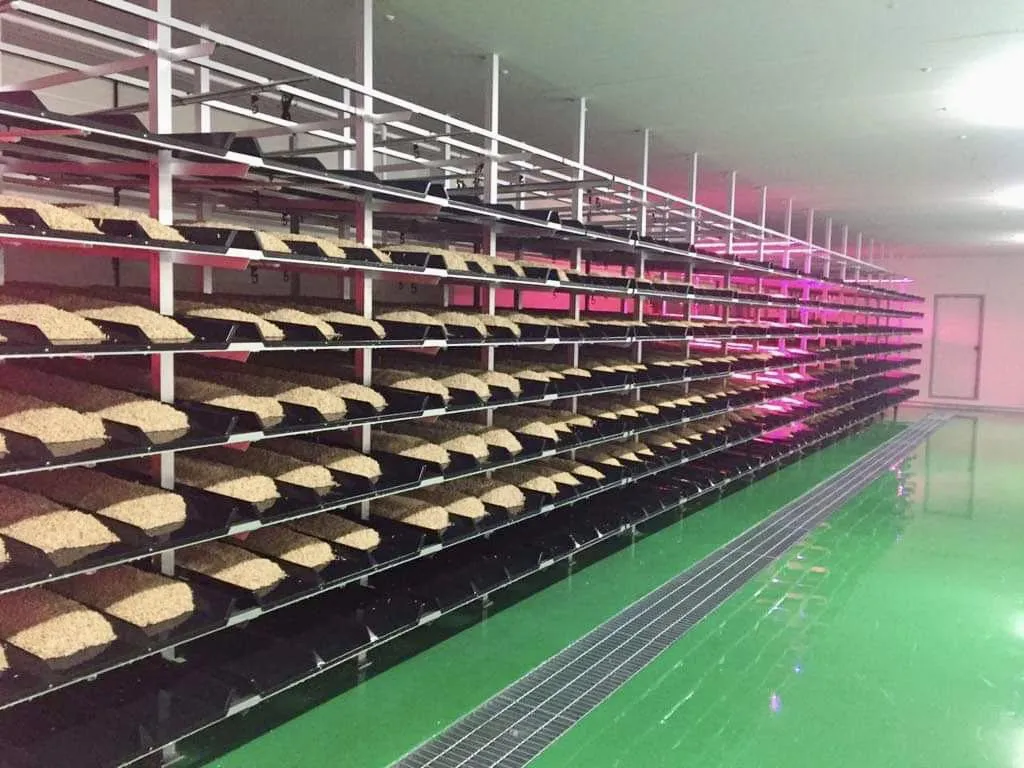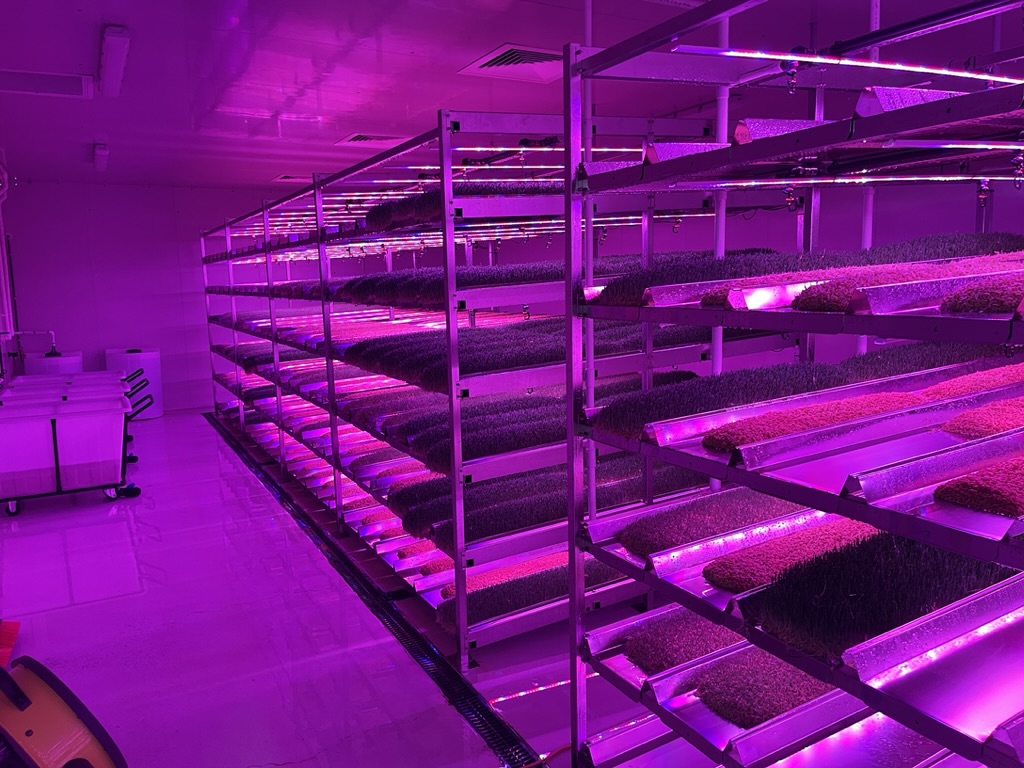

"Become Self Sustainable, Conquer Drought & Reduce Costs, with the Farming Industry's
Best-Kept Secret..."

"At Fodder Group, We're On a Global Mission to Provide Expert Independent Advice, Empowering Agricultural Visionaries Worldwide To Pioneer a Transformative Era in Food Production.
Get Pricing Info & Our
Free Production Calculator
Fill Out The Form Below
"Unlock Premium Nutrition, Slash Costs. Wave Goodbye to Subpar Feed, Costly Hay, and Sky-High Transportation Expenses. Cultivate Thriving, Nutrient-Rich Livestock with Ease."
Watch This Short Video To Learn
About Fresh Fodder
Crafting Tailored Solutions Across the Globe...
No Matter How Large Your Herd Size!




Benefits Of Fresh Fodder Are Astounding!


Nutritional Benefits
High Nutrient Bioavailability: Sprouting increases the bioavailability of nutrients like vitamins, minerals, and amino acids, making it easier for the horse to absorb and utilize.
Rich in Protein: Sprouted barley is a good source of protein, which is essential for muscle development and repair.
Enhanced Digestibility: The sprouting process breaks down complex carbohydrates into simpler forms, making the fodder easier to digest.
Low Sugar Content: Sprouted barley has lower sugar content compared to traditional grains, making it suitable for horses that are insulin resistant or prone to laminitis.
Hi in Omega-3 Fatty Acids: The sprouting process increases the levels of beneficial Omega-3 fatty acids, which are good for skin, coat, and overall health.
Antioxidants: Sprouted barley is rich in antioxidants like Vitamin E, which can help combat oxidative stress in horses.
By incorporating sprouted barley fodder into your horse's diet, you're not just feeding them; you're investing in their long-term health and well-being.
Practical Benefits
Cost-Effective: Growing your own sprouted barley fodder is more cost-effective than purchasing traditional horse feed.
Reduced Waste: The entire sprout is edible, reducing waste and making it an eco-friendly option.
Freshness: You can grow it year-round, ensuring that your horse has access to fresh, green feed even in winter.
Easy to Grow: Fodder Group hydroponic barley fodder systems are easy to maintain, requiring minimal space and equipment.
Hydration: The high moisture content in sprouted barley helps keep the horse hydrated.
Palatability: Livestock prefer the taste of fresh sprouted barley over dry feeds.
Reduced Dust and Allergens: Unlike hay, our sprouted barley fodder never contains dust and mold, making it a healthier option
Reduced Shipping Costs: Because you can grow it on-site, you save on shipping and storage costs.
Sustainability: Growing your own fodder is a sustainable practice that reduces your carbon footprint and methane output.
Our Four Step Growing Process...
Our Semi Automated Process & Training Makes The Job Easy!
#1 Soaking
We soak the in a specific way to get it off to a flying start. This gives us an extra 20% overall yield within our system. We also treat the grain with a natural product to ensure we never see mould.

#2 Seeding
The grain is then placed onto the trays using a PVC seeding tool. As each day progresses the sprouts increase in size and push across the trays. The right type of grain makes or breaks the process.

#3 Growing
Carefully measured water combined with custom lights that ensure we get the best possible growth. We can grow over 4 or 5 days depending on what type of animals we are feeding.

#4 Harvest
On the last day the fodder is at its nutritional peak and its time to harvest. Each tray of fodder is carefully removed and taken away to be fed out. Root mat should be white and sprouts dark green.

Grass Fed Animals Love Fresh Fodder...
Assists Rapid Healthy Weight Gain






We Partner With Synergistic
Global Companies...
To Enable The Leading Technology In Key Locations

The Cost Of Fodder Production...
Watch Our Short Video
Complete Cost Breakdown
Hard Costs Examined
Breakdown For Different Animals
Recommended Feeding Regime
Cost Per Head
Daily & Monthly Data
Frequently Asked Questions
Is Fodder Safe For Livestock?
Yes, we have been feeding fodder since 2006 and have had tremendous results.

How Much Should I feed My Beef Cattle?
If you are looking to fatten your cattle, 20kgs or 44lbs along with some hay or pasture will get the job done.

Can I Feed Too Much Fodder?
No it isn't really possible to feed too much. We have seen cattle eat twice (and more) the recommended amount and horses eat as much as 20kgs (44lbs) without any adverse effect whatsoever.

How Long Before I Start To see A Difference?
It takes approximately 2 weeks before you will start to see a difference in most livestock. After 4 weeks you will see large differences in the quality of an animals coat. Blood tests will also see positive increases in certain markers.

How Long Does It Take To Grow?
We grow our fodder in 5 days on the tray and get between 1:5 and 1:6 ratio of grain to harvested fodder.

What Size System Can You Build?
We have built systems up to 5,000kgs per day (11,000 lbs) however there is no limit to size with our current technology.

What Countries Can You Build In?
We have built systems in multiple countries cost effectively. Typically we use local products and tradespeople and fly in key components such as the computer system, lights and sprinklers. On the last week of the build we attend for training and commissioning of the system.

What Is The Typical Cost Of A System?
This varies from country to country and is also size dependant. We prefer to build large systems (over 500kgs) but of a very high standard. Quality components such as stainless steel trays and racking are used so the system lasts for decades.

Evidence Disputes Disbelief...
The Following Videos Contain Useful Information!
Seamless System Solutions, Purpose Built By Our Partners To Suit Your Unique Herd...
We Work With System Suppliers In All Countries

What Are The Next Steps?
Follow The Three Steps Below!

Nobody Even Comes Remotely Close...
We Recommend Quality Grow Systems In Your Area !






Environmentally Superior To Any Other Feed...
Healthier For The Animal And The Environment!
Contact Us
WhatsApp: +61 407 789 456

Email: chris@foddergroup.com
Web: www.foddergroup.com
